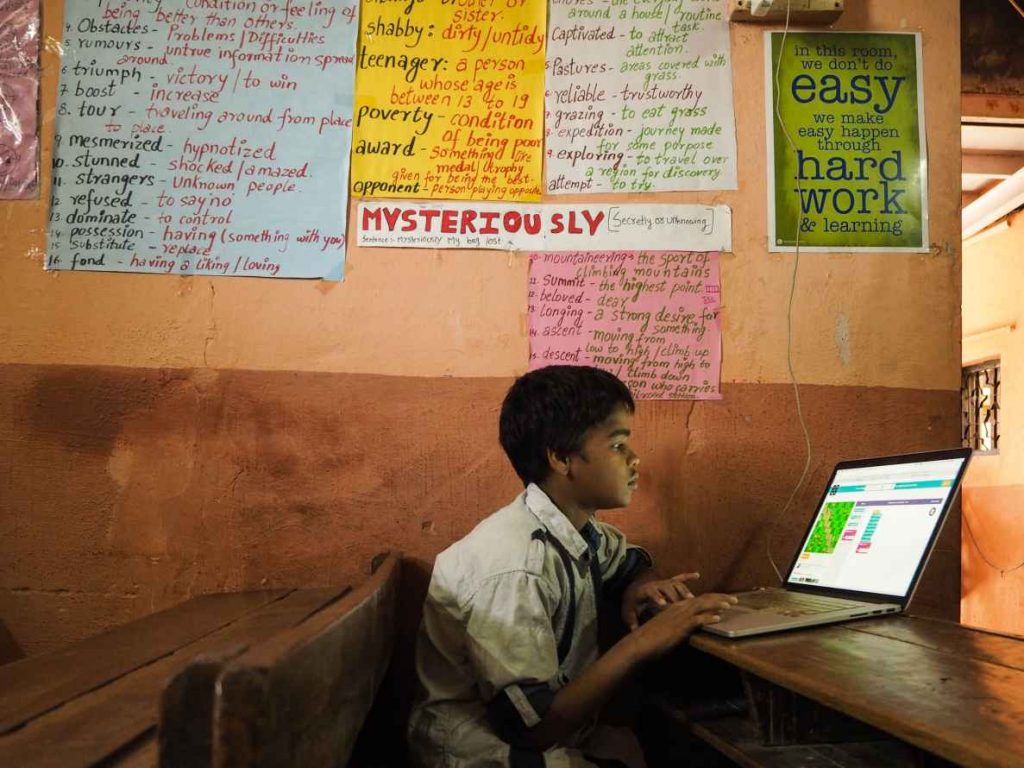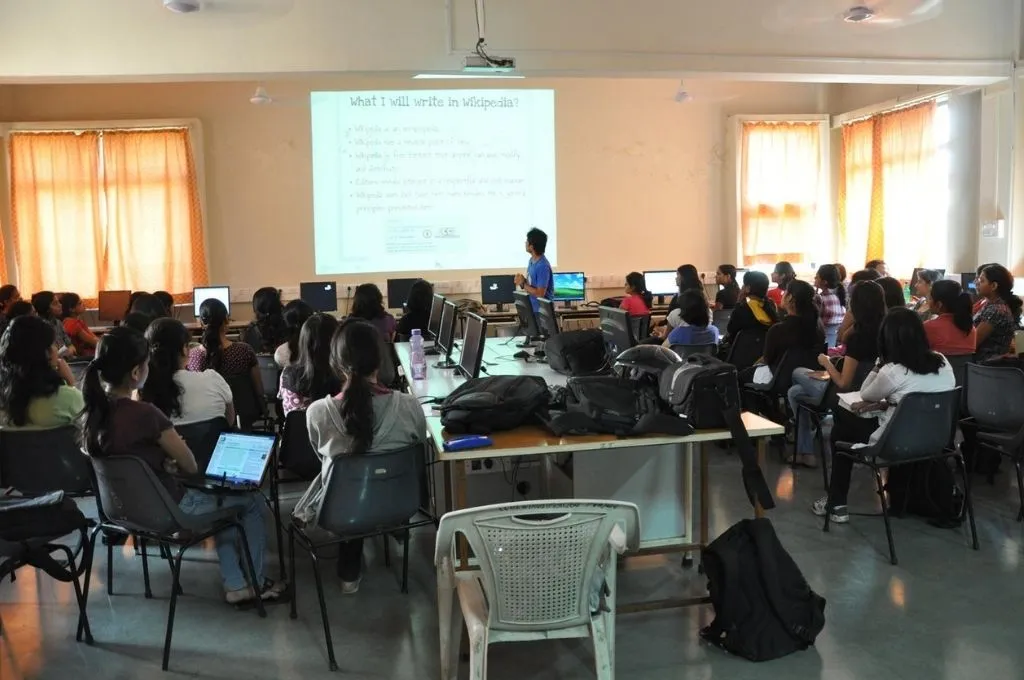In India, the Union Budget 2019 allocated nearly INR 94,000 crore for education. Despite this expenditure, students coming out of the education system are not job-ready and lack the necessary skills needed to thrive in the era of Industry 4.0. One of the main limitations of our education system is asymmetrical learning. In a typical classroom, the pace of teaching cannot adapt to different learning capacities and learning levels of the students. However, educational technology (EdTech)—the use of information and communication technologies (ICT) in the education system—can bridge the gap between delivering education and making learning effective.
The Association for Educational Communications and Technology (AECT) defines EdTech as ‘the study and ethical practice of facilitating learning and improving performance by creating, using, and managing appropriate technological processes and resources.’
EdTech isn’t just about digitising the content, but rather about providing unlimited access to personalised and customised learning.
EdTech isn’t just about digitising the content, but rather about providing unlimited access to learning which can be personalised and customised. Blended learning, empowered teachers, and standardised quality content alongside a robust monitoring and evaluation system are some elements that will be essential to achieve Sustainable Development Goal 4 which seeks to ‘ensure inclusive and equitable quality education and promote lifelong learning opportunities for all.’
In the last few years, there has already been an increasing interest from funders and educationists in EdTech. According to Datalabs by Inc42, between January 2014 and September 2019, more than 4,450 EdTech startups were launched in India. Of this, 25 percent have shut shop while only 4.17 percent have raised funds, despite there being a unicorn in the sector—Byju’s. Globally too, the growing pre-K-12 (a term used to represent pre-kindergarten to grade 12) software market is currently worth more than USD 8 billion and is likely to be worth USD 87 billion by 2030.
The current crisis has made online learning and home-schooling more pertinent than ever.
Moreover, COVID-19 has changed the debate on EdTech from a question of if to how. The current crisis has made online learning and homeschooling more pertinent than ever, and it has accelerated the adoption of online learning by almost a decade.
However, despite increased investor attention towards EdTech and significant growth in its adoption by students and education institutes, the return on education (RoE)—which is a collective measure of outcomes of EdTech—has not shown any significant improvement. The sector faces the following social and technical challenges:
Engaging the ecosystem
Often, EdTech is mistaken as ‘tech-ed’, focusing on technology rather than education. There has been no structured and focused approach by the government and EdTech players in meaningful engagement with all the key stakeholders such as parents, teachers, students, educationists, nonprofits, and technology-based organisations within our education ecosystem.

Equity and accessibility
The focus of EdTech so far has been middle- and upper-class customers in Tier I and Tier II cities. Between 2014 to 2019, startups involved in test and entrance exam preparations and online certification startups accounted for 88 percent of the total capital inflow in EdTech. This has skewed the fundamental premise of using technology for equity and accessibility.
Technology infrastructure
Today, the technology stack and architecture of any EdTech interface is decided independently, and little thought has been given towards building interoperability and scale. There are multiple platforms built by the government and private players, but there is no integrated roadmap.
Scale and data-driven
Since there aren’t any standards set by regulatory bodies, there is no real transparency and evidence available in the outcomes claimed by EdTech startups. The claims are derived from market research and the number of customers, rather than any validation of educational outcomes.
National EdTech Policy: Time to reimagine education
The recent National Education Policy (NEP 2020) introduced by the Government of India is a comprehensive document that sets aspirational goals to reimagine education in the next three decades. One of the key focus areas of NEP 2020 is leveraging technology for its foundational pillars, namely access, equity, quality, affordability, and accountability.
A National EdTech Policy can set a roadmap for the stakeholders of the education system.
Given the amount of investment that the sector is attracting, and the potential to scale-up and measure educational outcomes for large sections of society, there is an urgent need for an EdTech policy so that the investment and effort being put by the private players and governments is in alignment with the long-term goals of the NEP 2020.
A National EdTech Policy can set a roadmap for the stakeholders of the education system such as policymakers, educationists, teachers, and private players. It should also address issues of infrastructure, ecosystem development, assessment, learning, and teaching—alongside the systemic issues of access, affordability, and collaborative outcomes.
If we are to address the multiple challenges of the sector, the following areas need special attention:
Public-private partnership (PPP) model to bridge the digital divide
The digital divide in India has become starkly visible due to COVID-19. While there are no hard numbers on this, a conservative estimate shows that around 30 percent of students do not possess the infrastructure to pursue online learning. Heart-wrenching stories of families selling valuables to buy an old phone, or students sitting on a treetop to attend lessons are aplenty. Even the Delhi state government has acknowledged that more than 15 percent students in its government schools were untraceable.
A conservative estimate shows that around 30 percent of students do not possess the infrastructure to pursue online learning.
Though the telecom network has grown exponentially in the country, both the public (government-owned BSNL) and private network infrastructure is still woefully inadequate to facilitate media-heavy education content. As per TRAI reports, there are still 500 million users who have a 2G network, primarily in rural India.
The World Bank’s guidance note on remote learning provides a good short-term and long-term roadmap for the appropriate EdTech infrastructure required to bridge India’s digital divide. Some innovative methods to address low internet connectivity include: education television (edTV) and education radio (edRadio) for broadcasting live classes, pre-recorded audio lessons using a landline or basic mobile-based Interactive Voice Response System, tablets, and USBs pre-loaded with education content delivered to students in remote areas, and even basic conference calls for interactive discussions. Leveraging PPPs can help in the development and deployment of such platforms, apps, and content.
Regional content
There are 22 scheduled languages and 13 scripts in India, but the content being developed by EdTech startups is predominantly in English. NEP 2020 has again re-emphasised the need to create content in regional languages. A comprehensive content guideline can be used to create standardised and multilingual content.
Open license
There are many EdTech platforms developed by public and private organisations, but technology and IP restrictions render them unsuitable for large-scale deployment. The open-source licensing model is essential to rapidly transform the education landscape. An open license enables educational institutes, nonprofits, and public institutions working at the grassroots to have access to standardised and cross-functional technology at low cost. Revenue losses incurred by organisations providing open licenses can be compensated along the lines of ADC charges in telecom, where operators are compensated for providing services in rural areas.
Responsible use
The rapid proliferation of EdTech initiatives has created concerns around data privacy and security. Most EdTech users are minors, and there is an urgent requirement for a policy that elucidates the responsible use of data for all the stakeholders in this sector.
India is poised at a critical juncture of technological transformation in the education sector. This is reminiscent of 1999, when the new telecom policy was launched. It set the stage for exponential growth in telecom in the country, and tele-density—the number of phones per 100 people—improved from two percent to 90 percent, a number higher than many developed nations.
In the last nine months, we have witnessed an unprecedented adaptation of EdTech in education. Solutions which were built for a single school were suddenly being used for state-level rollouts. WhatsApp groups meant for social conversations were transformed into online classrooms. A rural teacher who was uncomfortable preparing a simple Word document was able to pick up multimedia presentation skills almost overnight. All possible modes of communications were used to reach out to the students. Social sector organisations used live streams, WhatsApp, SMS, free conference calls, regular conference calls, community radio, TV, loudspeakers, and public walls to impart knowledge.
While the jury is still out on the learning outcomes of this massive collective effort over the last few months, let this opportunity to remould the education system—catalysed by technology—not be in vain. A National EdTech Policy would provide the necessary impetus to carry forward the momentum of reimagining education in the post-pandemic era.
—
Know more
- Read an overview of the best practices and step-by-step guidelines for the successful selection and implementation of EdTech deployments within education facilities.
- Read this blog to understand the distinction between education technology and EdTech.
- This report highlights gaps in NEP regarding EdTech.
- Read more to understand why EdTech Policy is failing globally and needs a critical update.





